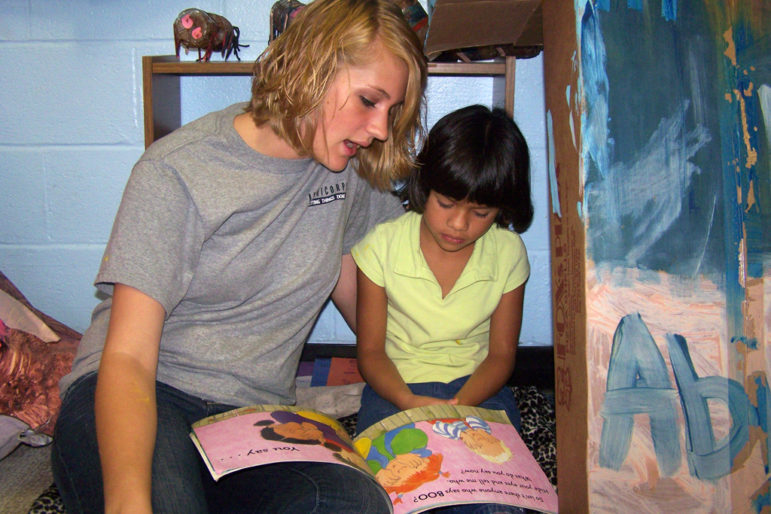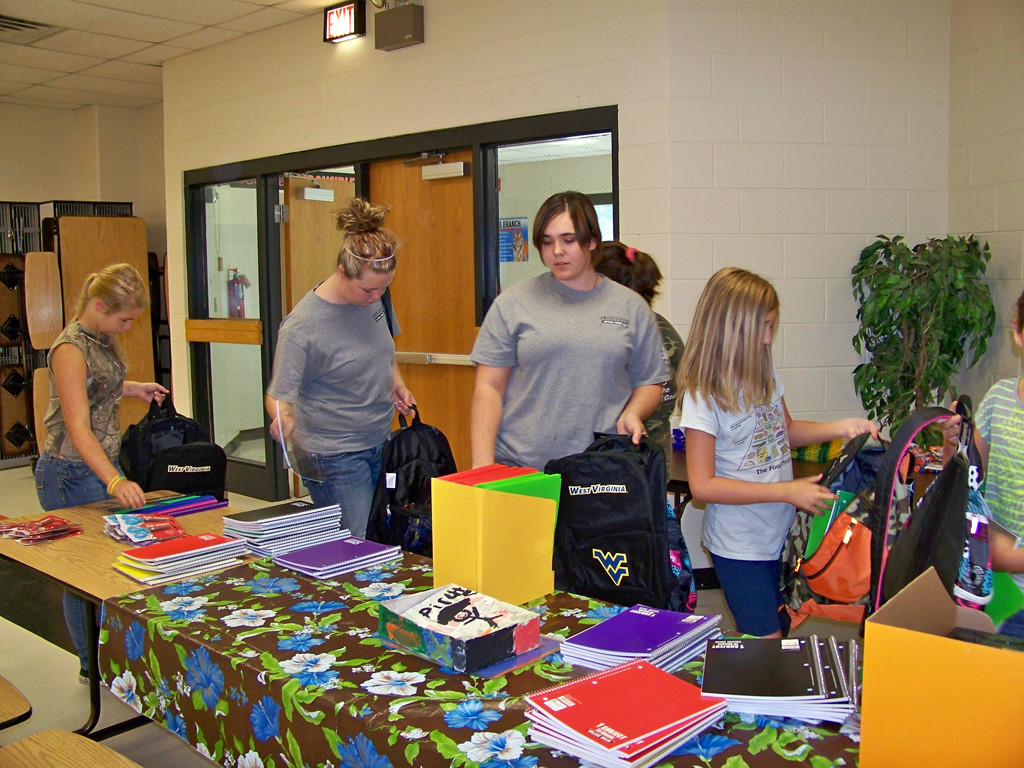In New Britain, Connecticut, elementary school students can get a passport at the beginning of summer, listing places in the community they can visit — ranging from the fire department and newspaper to the planetarium and youth theater. When they go to those places, kids may get a tour, talk to adults and get their passport stamped. The passports encourage summer activities that educate and connect kids to the community.
In rural West Virginia, young people sit down on summer mornings to a nutritious family-style breakfast at Energy Express, and then do fun literacy activities in small groups or one-on-one.
Youth in Dallas can go to the Dallas City of Learning website to discover summer activities that allow them to explore their interests.
Innovative programs developed in cities and communities around the nation are influencing state legislatures to promote summer learning, said Rachel Gwaltney, director of policy and partnerships at the National Summer Learning Association.
“Districts and programs are going to their states and saying, ‘This is really working in our communities and we need to see more of it in our state’,” Gwaltney said. “That’s where a lot of the state policy is coming from.”
Summer learning was boosted by the Obama administration, with Michelle Obama speaking out in support. The Campaign for Grade-Level Reading, a collaboration of foundations, nonprofits, businesses and others, has also influenced states to focus on reading proficiency.
What states are doing
Last year, 15 states passed 40 pieces of legislation related to summer learning, Gwaltney said.
“Literacy remains a high priority,” she said.
In 2016, for example, New Mexico extended a 25-day summer reading program to fourth- and fifth-grade students that was previously only offered for grades K to 3.
Mississippi passed legislation requiring schools to have an intensive plan for individual third graders who are not reading at grade level — including teaching them at summer reading camps. The state has prohibited promoting them to fourth grade until they are at grade level.
“States are starting to take the approach that schools can’t do it alone,” Gwaltney said. They’re fostering partnerships among schools, community organizations and nonprofits. Maryland, for example, passed legislation in 2016 to provide grants for those entities to provide extended-day and summer programs. It also requires them to use the Maryland Out-of-School Time Programs’ Quality Standards Framework
States are providing funds for STEM education and for youth employment programs, Gwaltney said.
For example, Maryland has set up a $250,000 grant program for schools to foster robotics programs, including summertime clubs and camps. And California passed a resolution to set up STEM programs and employment pipelines for Los Angeles-area youth, especially in low-income communities.
What’s the need?
The National Summer Learning Association says the need is urgent for quality summer learning programs that attract students, especially low-income youth.
For one thing, it’s an issue of equity, according to the organization.
Research shows that low-income kids lose a significant amount of academic skill over the summer, unlike more affluent kids, who tend to gain academically.
“The pattern was definite and dramatic. It was quite a revelation,” according to Johns Hopkins sociology professor Karl Alexander, in a research brief published by the National Summer Learning Association.
He and his colleagues surveyed student data in Baltimore and published the results in 2007. They found that during the school year, children progress at an equal rate, but during the summer low-income kids drop behind.

An AmeriCorps member served as a mentor, reading one on one with a child at the Energy Express summer program.
Alexander and his colleagues concluded that two-thirds of the academic achievement gap in the ninth grade between low-income and higher-income students stems from the gap in summer activity during the elementary school years.
During the summer, middle-income students are more likely to get enrichment activities such as museum visits, summer camps and trips, according to Alexander.
Low-income kids progress as well as high-income kids during the school year. It’s summer that makes a difference, the report said.
Citywide efforts address equity
However, in New Britain, Connecticut, “kids are coming back to school better prepared,” said Monica Logan, vice president of program and systems quality at the National Summer Learning Association.
The school district and city “called on the entire community, [issuing] a call to action around summer,” she said.
They took a citywide coordinated approach, she said, working “with the YMCA, the mayor’s office … so the kids are getting a really great mix of experiences.”
A coordinated approach within a city is important, she said.
A 2015 report by The Wallace Foundation “Growing Together, Learning Together: What Cities Have Discovered About Building Afterschool Systems,” found that a citywide approach can provide strong leadership, central coordination, effective use of data and a comprehensive approach to quality.
Gwaltney said when a city leader, such as a mayor, is working with community members, the school district and community-based organizations, they can look “across the entire community to see where the needs and … the gaps are.”
Six elements are important in creating a coordinated community effort, according to the association in its December 2016 newsletter SPARK 1:
- Engaged leadership
- A shared vision
- Marketing and communications
- Data management
- Continuous quality improvement
- Development of sustainable resources
Health and career readiness are also goals
In addition to addressing the academic achievement gap, summer programs are also addressing the need for better nutrition and more physical activity among kids, as well as the need for jobs and workforce development among older kids.
The Dallas City of Learning is a public-private citywide initiative led by the city of Dallas, the Dallas Independent School District and a nonprofit, Big Thought, that develops programming for kids outside the classroom in Dallas. The organization has created a smorgasbord of summer learning activities, and workforce preparedness is one of the goals.
“They’re integrating multiple sectors in their summer learning efforts so kids have great exposure to career opportunities,” Logan said.
Kids can earn digital badges showing the skills they have mastered. These badges encourage the development of interests and skills that can prepare young people for a career.
“Over time, [badges] can help you gain access to internships, jobs and school credit,” according to a brochure from Dallas City of Learning.
In another partnership model, Energy Express in West Virginia serves more than 3,000 children at 80 sites. The children get an eight-week, summer reading and nutrition program, led by the West Virginia University Extension Service’s 4-H Youth Development program. In addition to focusing on literacy with the goal of closing the achievement gap, the program provides breakfast and lunch to make sure kids in low-income areas are well-nourished during the summer.
States pay attention
“Summer learning plugs into state priorities in a lot of different ways,” Gwaltney said.
“Sometimes it’s around literacy, sometimes it’s around workforce development, sometimes it’s about student success,” she said.
“Those are the things that are bubbling up,” she said.
Citywide summer learning toolkit
The 2016 Action Toolkit: Expanding Summer Learning, Meals and Jobs for America’s Young People, sets out seven steps for creating a coordinated citywide effort.
- Create a communitywide steering committee.
“Unless you intentionally set a table for summer, it’s unlikely the key players will come together,” according to the Action Toolkit. Players include city and county agencies, schools, funders, program providers and families and youth. Leadership by a mayor or superintendent can be important in support of the effort. - Focus resources to meet the key needs.
Develop a portfolio of summer activities that can address literacy, wellness and jobs for older kids as needed in your community. - Create a multiyear plan with specific goals and strategies to meet them.
Align the plan with education and out-of-school time priorities. - Get the word out through a citywide marketing campaign and develop a way families and youth can access summer program information.
Develop a campaign using the resources of the key players.
A printed catalog, web database or 211 call center can serve as hub for information on programs. - Track what’s happening using an agreed-upon data collection and sharing process.
Collect data on participation, quality, and outcomes. - Focus on quality.
A communitywide summer learning program can adopt quality standards and provide training. The Summer Learning Program Quality Intervention, created by the Weikart Center and the association, is available. - Make it sustainable.
Create a resource map to see all the available funding from local private foundations; business donations and sponsorships; local public funding; national foundations; state funding; and federal funding, Make long-term plans.
Source: National Summer Learning Association, summerlearning.org
Go to the OST Hub for more information on the New Britain Coalition.
































